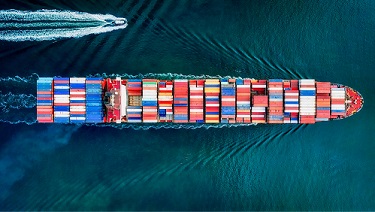
New Tyndall research calculates carbon emissions from existing ships, and shows how these can be reduced in-line with the Paris climate agreement’s 1.5 degree goal
24 June 2020
The research found that the carbon dioxide (CO2) emitted over the lifetimes of existing ships would use up more than the sector’s entire carbon budget, unless action is taken.
There are many options to cut emissions from these existing ships, for example on slower speeds, shore power and wind-assisted technology retrofits. CO2 from shipping could still stay within 1.5 degree carbon budgets, if strong policies are implemented quickly. Policies to cut CO2 must focus on decarbonising and retrofitting existing ships, rather than just rely on new efficient vessels, for shipping to meet these Paris climate agreement goals. The International Maritime Organisation (IMO) also needs to tighten its existing climate target to be Paris-compatible, and aim to be net zero by 2040.

Shipping can help keep global warming below 1.5 degrees, but cutting emissions from the existing fleet needs to be an urgent priority for the IMO.
Read the full paper and Policy@Manchester blog at the links below-
